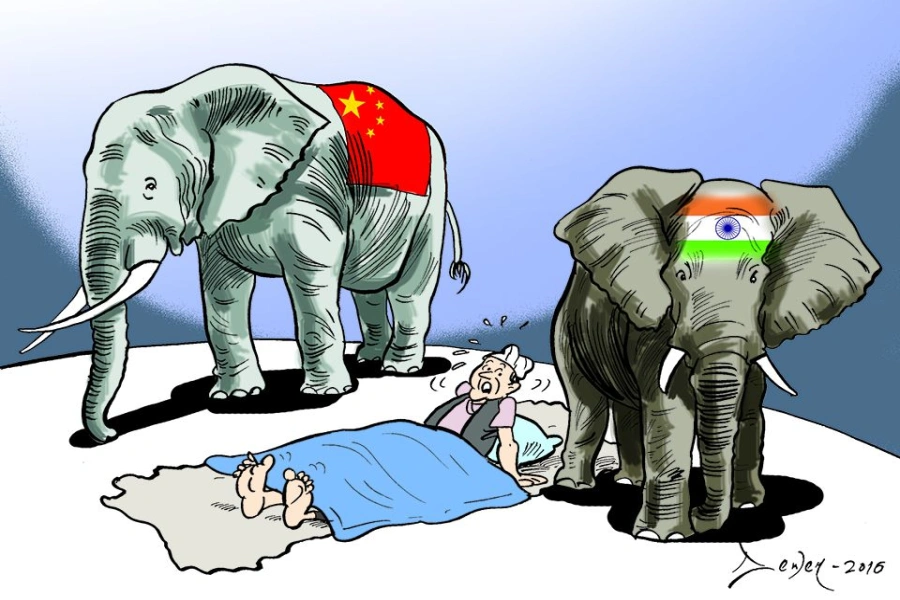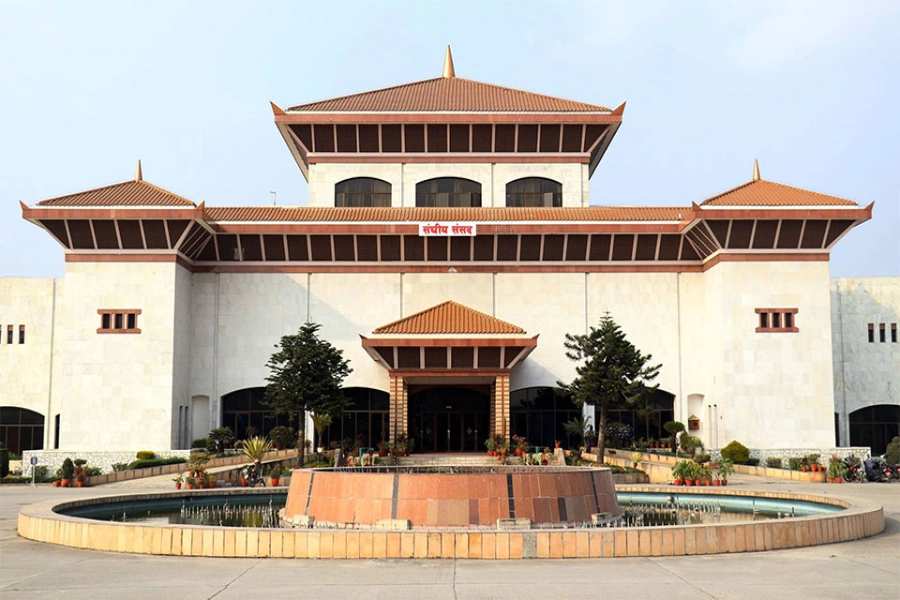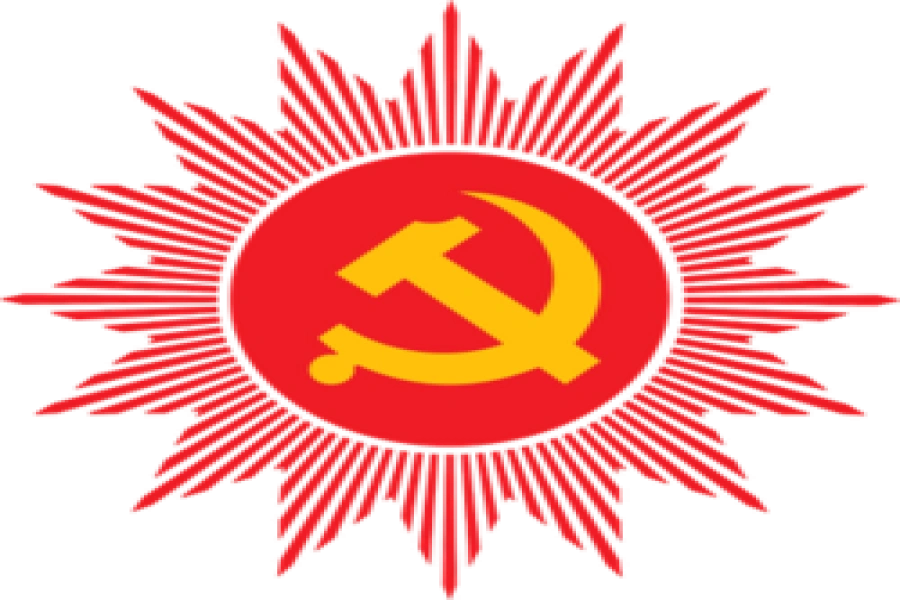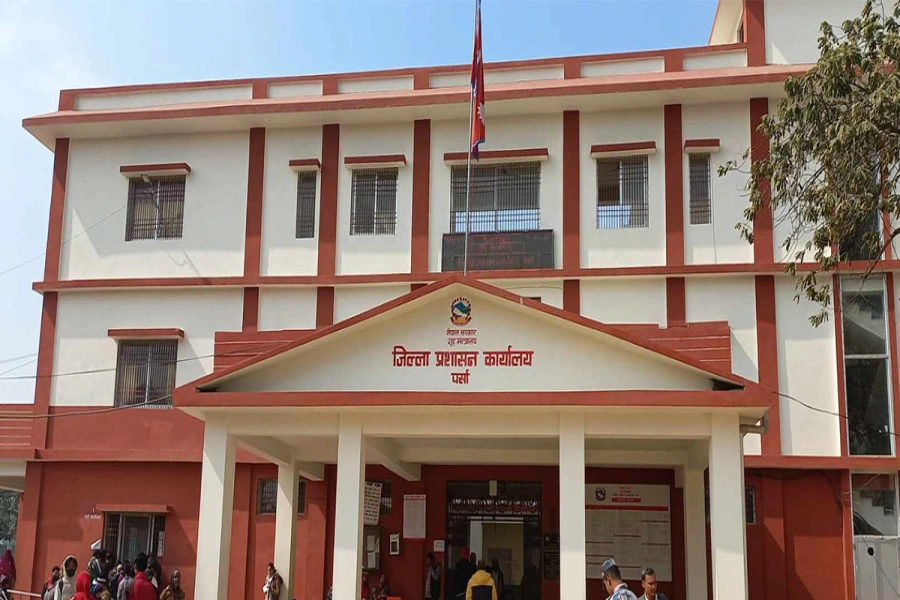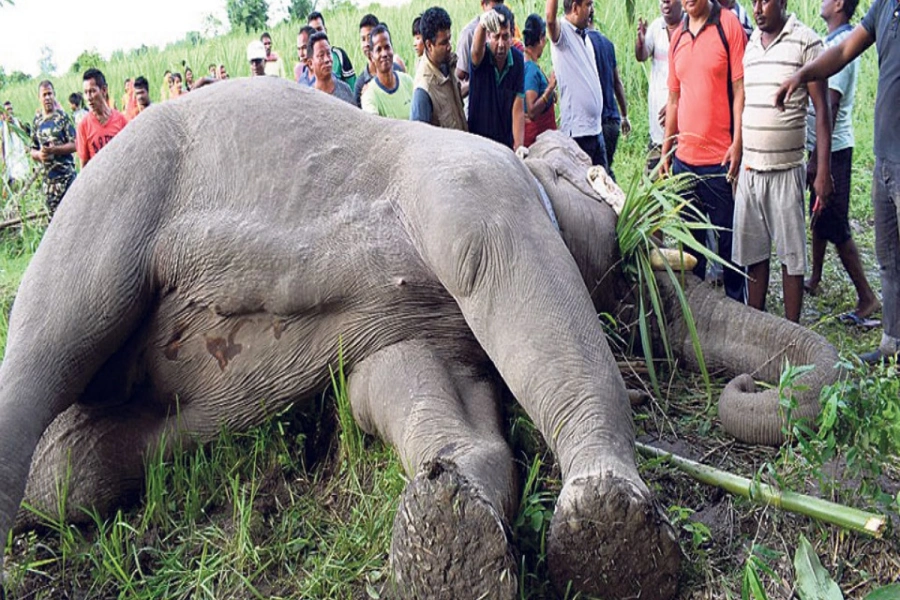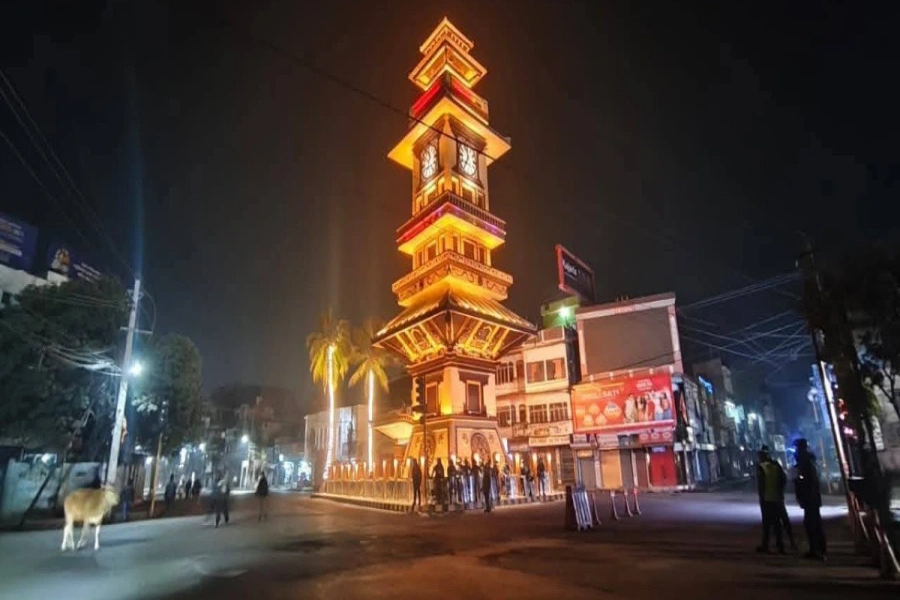GDP growth is significantly lower in countries with a high propensity of government collapse
Political stability plays a pivotal role in securing high economic growth. There are several instances from around the world in which countries have achieved notable rates of economic growth when they achieve success in maintaining political stability. Nepal, despite aspiring to thrive in its economic progress, has been facing big hurdles of political turmoil time and again in its growth path.
Nepal expected to secure political stability since it adopted multi-party democracy in 1990, which however was in vain. In due course, the plans of transforming into liberal economy along with major economic reforms forwarded by the then governments could not reach their final goals due to the reason.
The democratic transition in Nepal was a grand success through the people's movement in 1990, but it was short-lived. The political facet took different turns after the then Maoist rebels launched an armed rebellion in 1996 followed by the royal massacre in June 2001.
This brand-new transition was made possible by the historic mass movement's success in April 2006, which transformed the country into a democratic republic by removing the centuries-old monarchy. The additional achievements of this mass movement were also considered on account of putting an end to the "people's war" waged by the Maoists and restoring peace and reorganizing the government, redefining the relationship between the people and the state.
The Communist Party of Nepal (Maoist) won the Constituent Assembly (CA) election in April 2008, becoming the largest political party in the CA. Nepal adopted a new constitution in 2015, however it created a constitutional crisis, leading to protests and a blockade along the Nepal-India border. The Madhesi community in the southern plains claimed that the new constitution was discriminatory, divisive, and controversial. Corruption is another major factor contributing to political instability in Nepal. Political polarization is also a significant factor contributing to political instability in Nepal. The deep divide between left-wing and right -wing political forces has made it difficult to build consensus. That causes frequent changes in the government.
Since the abolition of monarchy in Nepal in 2008, the country has seen 11 governments as of July 2024. The chief reason for the frequent change in the country’s leadership is political factionalism.
In lack of political consensus, the practices of toppling down the government either from the members of the same political party or other opposition parties continued to prevail. For over a decade, the country grappled to pacify the people’s war launched by the Maoists, while in the next one and a half decade, the country struggled to institutionalize the federal system. But in all, the consensus in major economic agendas were simply lacking.
Low capital expenditure, financial sector vulnerabilities and p...

The Nepalese economy has also suffered as a result of political instability. Businesses and investors are hesitant to invest in the country due to the lack of stability and predictability. This has resulted in a lack of economic growth and job creation, as well as increased poverty and inequality.
The Nepalese economy has also suffered as a result of political instability. Businesses and investors are hesitant to invest in the country due to the lack of stability and predictability. This has resulted in a lack of economic growth and job creation, as well as increased poverty and inequality.
The International Monetary Fund (IMF) in its working paper published in 2010 states that political instability is likely to shorten policymakers’ horizons leading to suboptimal short term macroeconomic policies. It may also lead to a more frequent switch of policies, creating volatility and thus, negatively affecting macroeconomic performance.
Slow economic growth
The article entitled “Income distribution, political instability, and investment” published in the European Economic Review Volume 40, which utilized data on 113 countries from 1950 to 1982, found out that GDP growth is significantly lower in countries and time periods with a high propensity of government collapse. The socio-political instability generates an uncertain politico-economic environment, raising risks and reducing investment. Political instability also leads to higher inflation.
Political instability can be viewed in two ways. The first one indicates the uncertainty and instability related to executive instability and the second one is related to social unrest and political violence. A politically unstable environment is associated with rising risks which create unfavorable conditions for investments.
A research paper entitled ‘Impact of Political Instability on Economic Growth of Nepal’ published in the Economic Journal of Nepal, CEDECON, TU shows political instability affects economic growth by influencing its dynamics, affecting foreign direct investment (FDI), financial markets, and effectiveness of economic policies, etc. It also affects the development and inclusion of economic growth, affecting human capital development, and income inequality and distribution which can lead to further social and political distortions that lead to a vicious cycle of political instability and poor economic performance.
Nepal’s GDP growth rate stood pathetic in the past three decades, with an average growth rate of less than four percent. The government data shows that the country achieved an economic growth rate of over six percent in very few cases over the period.
Increased brain drain
The political instability has also taken a toll on the availability of youth and energetic workforce. The political frustration and lack of employment opportunities have led to a massive loss in both skilled and unskilled manpower.
As per the preliminary report of the 2021 census, 2.1 million Nepalese are abroad. As per the National Living Standard Survey 2011, 56 percent of Nepali households have at least one member of their family working and living abroad.
Looking at the trend of labor permit issuance by the Department of Foreign Employment (DoFE), Nepal had been experiencing a steady rise in outbound migration since the 2000s. The number of labor permits issued peaked in 2013/14, reaching a high of 519,638, before continuously falling in the following years.
In one decade since 2008/09, the DoFE issued over four million labor approvals to Nepali workers, according to the Nepal Labour Migration Report 2020 released by the Ministry of Labour, Employment and Social Security.
The government records show that a total of 699,841 Nepali nationals ventured abroad in search of employment opportunities in 2022/23. Over 741,000 individuals departed for foreign employment from Nepal in FY 2023/24. The country is certain to face huge social and economic costs due to outburst brain drain both in short run and long run.
Low FDI realization
Lack of timely formulation of policies and laws due to political instability also adversely affected the realization of foreign direct investment (FDI). Nepal has failed to boost policy framework and procedural efficiency to attract the foreign investors in the past two decades.
A Survey Report on Foreign Direct Investment published by Nepal Rastra Bank shows that Nepal received FDI commitment worth Rs 325.52 billion in the two and a half decades between 1995/96 and 2019/20. However, the country received only Rs 110.93 billion, a meager 34.1 percent of the pledged amount.
Pathetic agricultural growth
According to the National Rice Research Program, the country needs a total of 7.2 million tons of paddy production or 5 tons of rice per hectare to feed itself. In 1961, Nepal used to grow only 1.9 metric tons of paddies per hectare. Nepal on the other hand took 60 years to double its productivity. It went up from 2.7 tons per hectare in 2001/02, while it increased to only 2.9 in 2011/12, a decade later. Now, it is just 3.47 tons per hectare. The data shows that it had taken Nepal nearly 20 years to increase its productivity by one ton a hectare. Despite the slow growth, Nepal achieved a record high yield of 5.62 million metric tons in 2020.
Much like paddy, maize and wheat production has not seen any significant growth in recent years. Maize production 30 years ago was 1.62 tons per hectare. Today, it is just 3.15 tons per hectare. The productivity of wheat has reached about 3 tons per hectare, twice as much as 30 years ago but is nowhere close to what is required to be self-sufficient.





